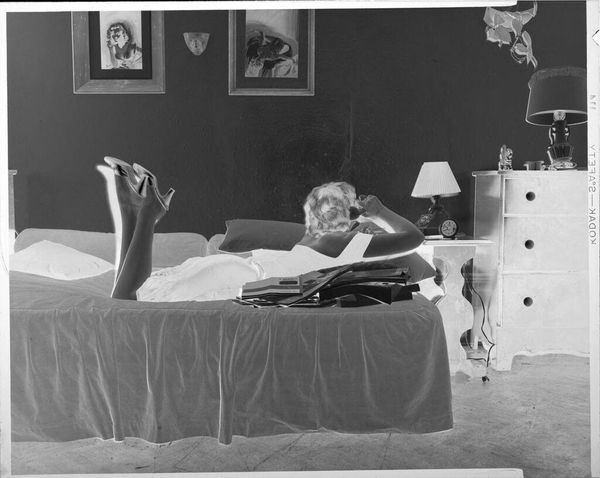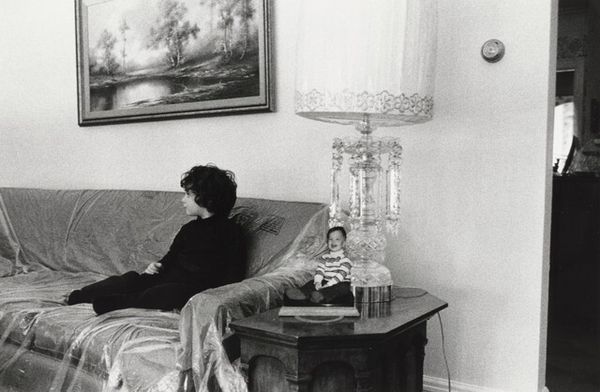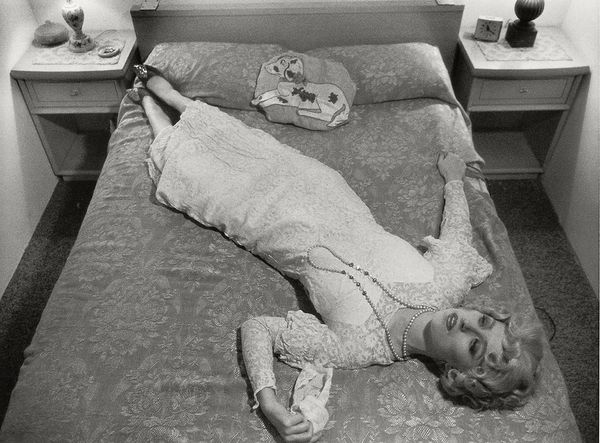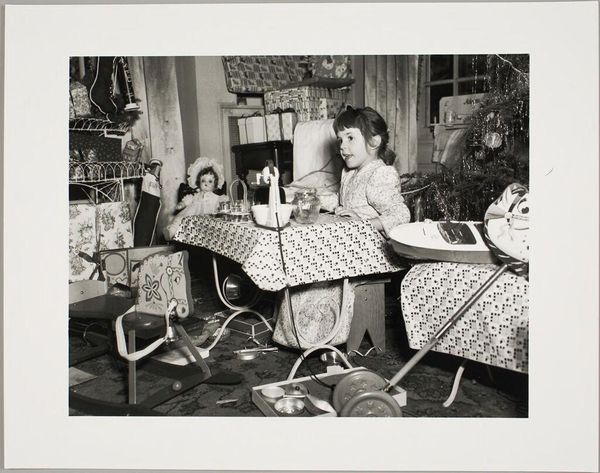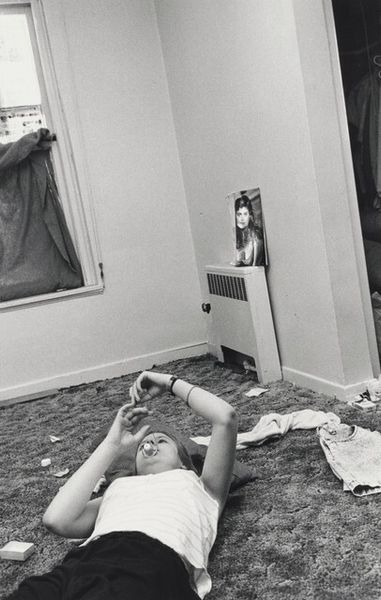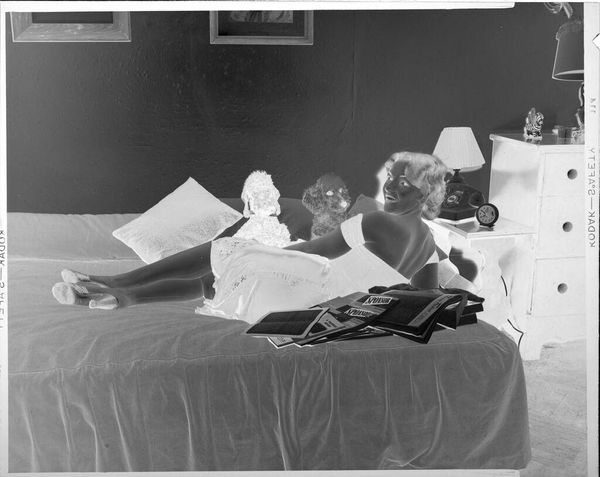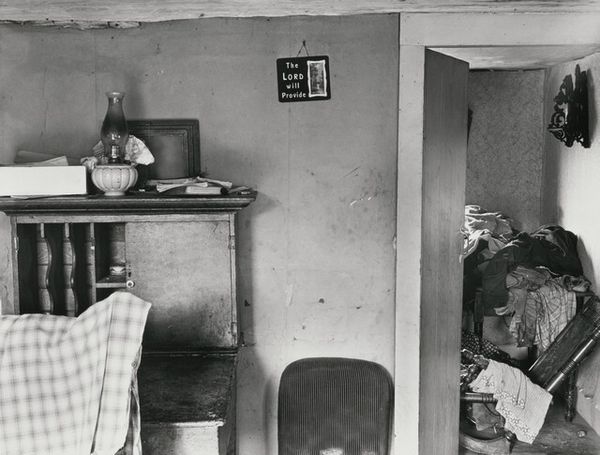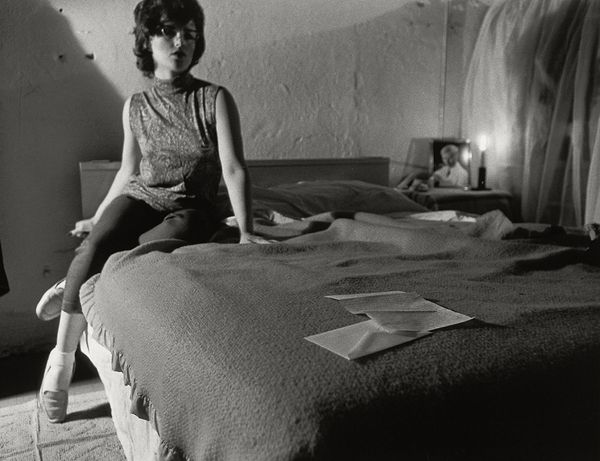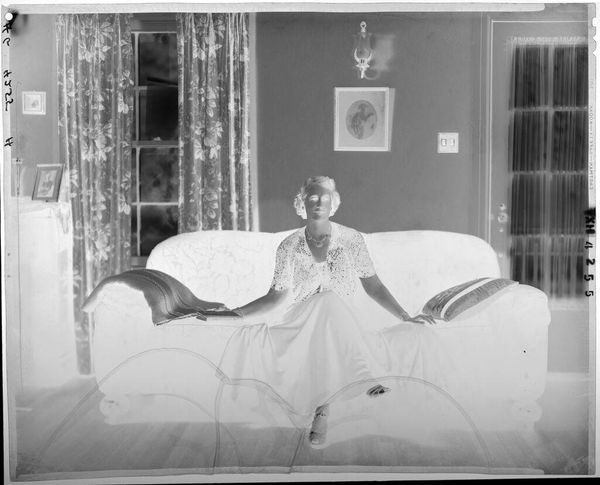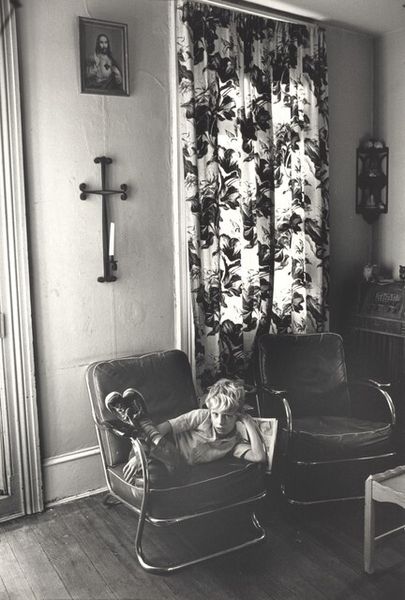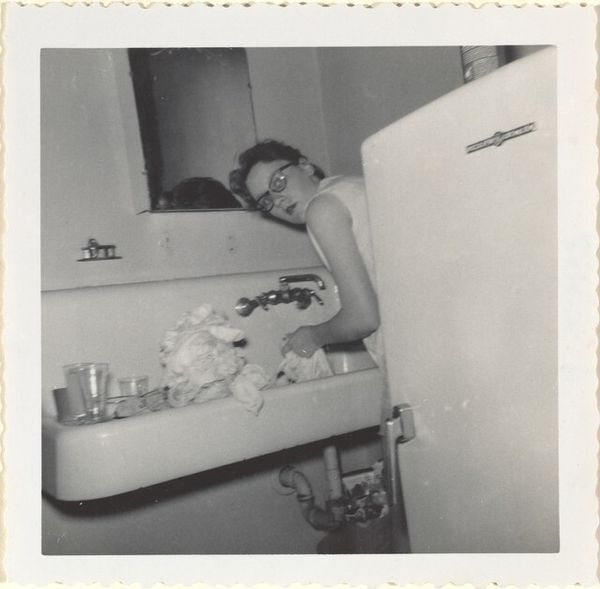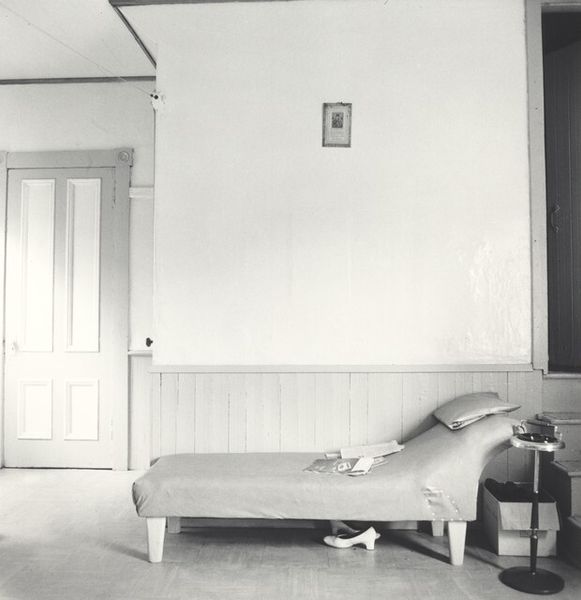
photography
#
portrait
#
contemporary
#
wedding photograph
#
self-portrait
#
conceptual-art
#
black and white photography
#
postmodernism
#
appropriation
#
furniture
#
show home
#
black and white format
#
showroom
#
photography
#
black and white theme
#
feminist-art
#
black and white
#
monochrome photography
#
monochrome
#
bridal fashion
Copyright: Cindy Sherman,Fair Use
Curator: Here we have Cindy Sherman's "Untitled Film Still #12" from 1977. It's a gelatin silver print, so photography. Editor: Yes, I notice the woman in the foreground seems distressed; she's next to a suitcase in what looks like a messy hotel room. What jumps out at you in this piece? Curator: What strikes me immediately is how Sherman manipulates our understanding of image production. It's staged, using readily available materials. She is in every photograph of the series, but they are all constructed images. The labour and production aspect of what seems like an 'easy' reproduction really confronts what is and isn't a representation. It is so deliberate that it brings up larger questions about feminine stereotypes produced for mass consumption, what do you think? Editor: That's interesting; it almost feels like a commentary on the performativity of femininity, the ways women are portrayed and consumed through visual media. Are you thinking that the image isn't just what it depicts but how it's made? Curator: Precisely! The low production values also suggest the context. How does Sherman distribute her artworks and address commodification? Each ‘film still’ uses her own body as raw material, becoming an actress, set designer, costume designer and make-up artist to generate each image. What do you consider happens to this notion of artistic genius once the means of production are so available and recontextualized? Editor: Hmmm… by making the means of image production so clear, Sherman reveals the manufactured nature of visual culture itself. I’ve definitely gained a fresh appreciation for Sherman's project and it's material engagement! Curator: Absolutely! The real subject is not the woman portrayed, but how such images function within our visual landscape and cultural consumption, which encourages one to reflect and assess her creative strategies and critique on gender identity and mass-produced media representations.
Comments
No comments
Be the first to comment and join the conversation on the ultimate creative platform.
